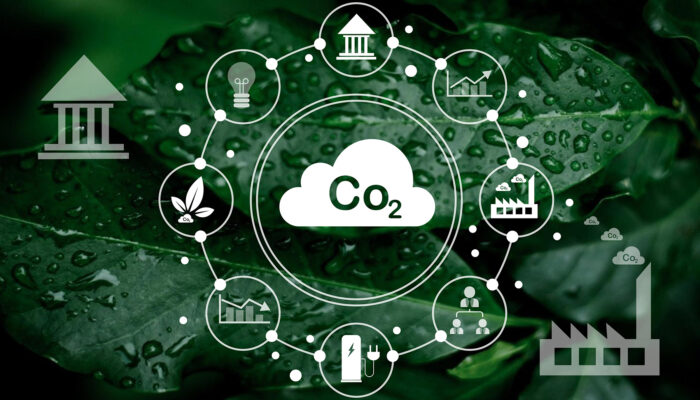Nuclear power is staging a comeback in the face of growing climate concerns and renewed desires for energy independence following Russia’s invasion of Ukraine. But it’s not based around the conventional large-scale nuclear plants of the past. Instead, a new breed of small modular reactors (SMRs) that are simpler, safer and cheaper than traditional reactors are opening nuclear up to private investment and look set to play a key role in our race to meet net zero emissions targets. We anticipate nuclear funding to reach $100 billion a year by 2030, increasingly driven by privately financed innovative SMRs reaching commercial viability across the globe.
It’s too little, too late for conventional nuclear
Nuclear power production has been around since the late 1950s and saw massive growth worldwide in the 70s and 80s, at one stage regarded as the future of electricity generation. However, Three Mile Island in the US in 1979, the Chernobyl disaster in 1986, and more recently the Fukushima meltdown in Japan in 2011 showed how dangerous nuclear power could be. As a result, public anxiety and anti-nuclear sentiment shut down plants and slowed new approvals.
In the UK, 5 of 6 nuclear plants are expected to be decommissioned over the next 6 years, with only 2 under construction, though the government is targeting another 6 to begin construction by 2030. In the US, 12 reactors have been closed, and nuclear programmes have ended in Japan and Germany.
Some countries plan to build new conventional reactors, but these won’t be nearly enough to meet the 2050 net-zero target, even if we accelerate new construction now. According to the IEA, hitting net zero requires doubling the current rate of nuclear capacity addition, and it takes eight years to build a conventional nuclear plant after 10-19 years of deliberation, according to the IPCC. Plants also require an enormous upfront capital cost, especially when compared to other coal or natural gas power plants. Upfront costs for new plants can easily reach tens of billions of dollars, requiring substantial state support that’s not always available especially in the current economic climate.
Even so, nuclear remains a reliable baseload contributor. In France, nuclear power provides 70% of the country’s baseload energy requirements. The UK has a similar reliance, albeit slightly lower, and nuclear provides a significant proportion of baseload supply for the whole European continent. While it’s true that the future European power system will be predominantly renewables, they still must be complemented with stable baseload electricity production derived from nuclear, which remains far more efficient than fossil fuels and is the only proven carbon-free alternative to coal and fossil fuels for reliable baseload power.
SMRs provides an ‘answer’
Small Modular Reactors (SMRs) are the driving force behind nuclear 2.0. According to the World Nuclear Association, SMRs are nuclear reactors, typically 300 MW equivalent or less, designed with modular technology using module factory fabrication. A variant are vSMRs, very Small Modular Reactors, up to 15 MW. Both types link easily with other energy sources, including fossil fuels and renewables, to increase overall baseload power and grid stability.
SMRs have a much smaller footprint than conventional reactors that have to be built on-site using unique and complex designs. They are manufactured much more quickly and safely in factories with standardized designs, then shipped for installation to remote locations inaccessible to a conventional power plant. From standardized designs come the benefits of scaled production and reducing costs.
SMRs have a significant safety edge over conventional plants. Older conventional plants are complex and rely on external power systems to cool reactor fuel in case of a power loss, which increases the risk of accidents. SMRs are less reliant on active safety systems like pumps, generators and batteries, instead relying on passive systems that remove the heat from the core without external interference like water reservoirs.
SMRs also largely avoid the maintenance and refueling complexity of traditional plants. For example, in France, half of the country’s reactors are currently shut down for corrosion problems, maintenance, refueling and technical issues. The resulting outages have cut French power output to a nearly 30-year low just as the EU aces its worst energy crisis in decades. In contrast, SMRs require less maintenance and have longer refueling cycles, some up to 20-25 years.
SMRs are currently under construction in China and Russia, with a prototype in Argentina and more set to roll out in 2023 in the US and Europe. It is expected that Argentina’s CAREM reactor will generate 25MW adjacent to the Atucha I Nuclear Power Plant, with construction to be completed in three years. China’s Linglong-1, an SMR in the southern island province of Hainan to meet regional baseload needs began construction in July 2021 and will take 20 months to finish.
Key players driving innovation
Large corporations actively developing SMR reactors include Rolls-Royce, GE-Hitachi, and Nuscale. Rolls-Royce recently secured a £210 million government grant for Rolls-Royce SMR after receiving £195 million of private capital in late 2021.
Nuscale is a frontrunners in SMR development and the first to receive US nuclear regulatory commission design approval. The company has developed a small module reactor that generates up to 77 MW using 1% of the space of a conventional reactor. Nuscale’s design integrates all the steam generation and heat exchange components into a compact design that allows it to be factory built and assembled and then shipped to the site.
Bill Gates’ TerraPower announced a $750 million fundraise in August in one of the largest advanced nuclear fundraises to date. The company is installing its first SMR in Wyoming.
There is also a growing list of startups driving increasing funding activity from VCs to bring new designs and solutions with variable sizes, applications and speed of deployment. SMR startup ARC Clean Energy Canada recently completed a C$30 million Series A financing from private investors and the Province of New Brunswick. ARC’s ARC-100 is a sodium-cooled reactor based on proven technology developed at the Experimental Breeder Reactor-II (EBR II), which successfully operated at the US government’s Argonne National Laboratory for thirty years. The ARC 100 offers 100 MW of electricity, enough to supply 250,000 people.
European investors are starting to become active as well. Geneva-based investor LIFTT invested $110m in UK SMR startup Newcleo and Swedish energy giant Vattenfall recently invested in Fermi Energy. Seaborg Technologies, Copenhagen Atomics, Transmutex, and Moltex Energy have also received a mix of state and private investments to accelerate rollout.
The nuclear option is back on the table
For decades investors kept away from nuclear power. However, SMRs are shifting attitudes, and there is a growing realization that nuclear is a vital part of the sustainable energy mix to hit net zero. The US, UK, France, Canada, and China, five major nuclear markets, have all already signaled growing support for SMRs and investment is beginning to flow from governments and private investors too for new generation technologies such as micro-reactors providing less than 50MWe (such as Jimmy), molten salt reactors (such as Thorizon) and fast breeding reactors (such as Leadcold) which are experimentally established but yet to be widely commercially deployed. Both the US and Europe now recognise the necessity for nuclear through substantial financing programs, such as the Climate Act in the US and the EU’s green taxonomy.
But challenges remain and SMRs promise to enable faster and cheaper construction and remote-location deployment are being put to the test. Companies such as Kairos Power, X-Energy or TerraPower are building the first of their reactors, moving from proof of concept to commercialization.
“SMR has been studied for several decades, but none has yet taken shape. Many risks must be framed: uranium supply, waste, security, financing needs, approval regulation, conception, and industrialization,” says Sébastien Le Roy, Principal at Serena, a Paris based Venture Capital and Private Equity firm.
“As we transition towards longer-term renewable energy sources, nuclear technology is now viewed as an increasingly powerful solution in combating the climate emergency. Funding is expected to significantly grow notably through political support with the implementation of state funding plans such as the €54 billion France 2030 call for projects or Advanced Research Projects Agency-Energy in the US.”
“Nuclear is also gaining interest from private investors (more mature technology, increased safety, reduced risks). Bloomberg highlighted in 2021 a $3.4 billion investment of venture funding for start-ups in the nuclear sector which is expected to reach more than $100 billion in the next few years. It is a new paradigm for VCs who want to tackle environmental issues and are looking for companies to go after hard value chains: asset-heavy solutions, long-term play, and industrial model.”
Learn more about us.










